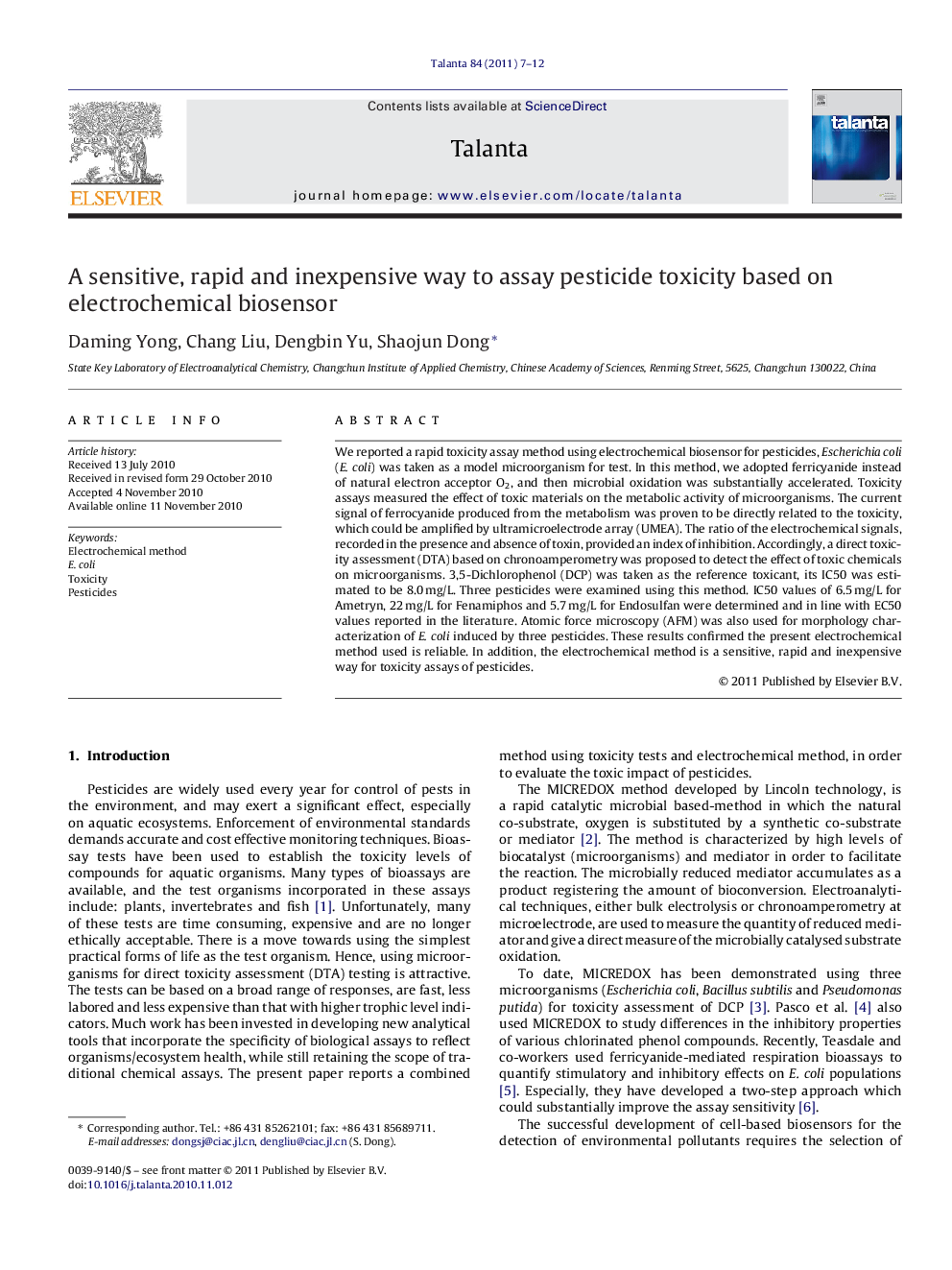| Article ID | Journal | Published Year | Pages | File Type |
|---|---|---|---|---|
| 1242504 | Talanta | 2011 | 6 Pages |
We reported a rapid toxicity assay method using electrochemical biosensor for pesticides, Escherichia coli (E. coli) was taken as a model microorganism for test. In this method, we adopted ferricyanide instead of natural electron acceptor O2, and then microbial oxidation was substantially accelerated. Toxicity assays measured the effect of toxic materials on the metabolic activity of microorganisms. The current signal of ferrocyanide produced from the metabolism was proven to be directly related to the toxicity, which could be amplified by ultramicroelectrode array (UMEA). The ratio of the electrochemical signals, recorded in the presence and absence of toxin, provided an index of inhibition. Accordingly, a direct toxicity assessment (DTA) based on chronoamperometry was proposed to detect the effect of toxic chemicals on microorganisms. 3,5-Dichlorophenol (DCP) was taken as the reference toxicant, its IC50 was estimated to be 8.0 mg/L. Three pesticides were examined using this method. IC50 values of 6.5 mg/L for Ametryn, 22 mg/L for Fenamiphos and 5.7 mg/L for Endosulfan were determined and in line with EC50 values reported in the literature. Atomic force microscopy (AFM) was also used for morphology characterization of E. coli induced by three pesticides. These results confirmed the present electrochemical method used is reliable. In addition, the electrochemical method is a sensitive, rapid and inexpensive way for toxicity assays of pesticides.
